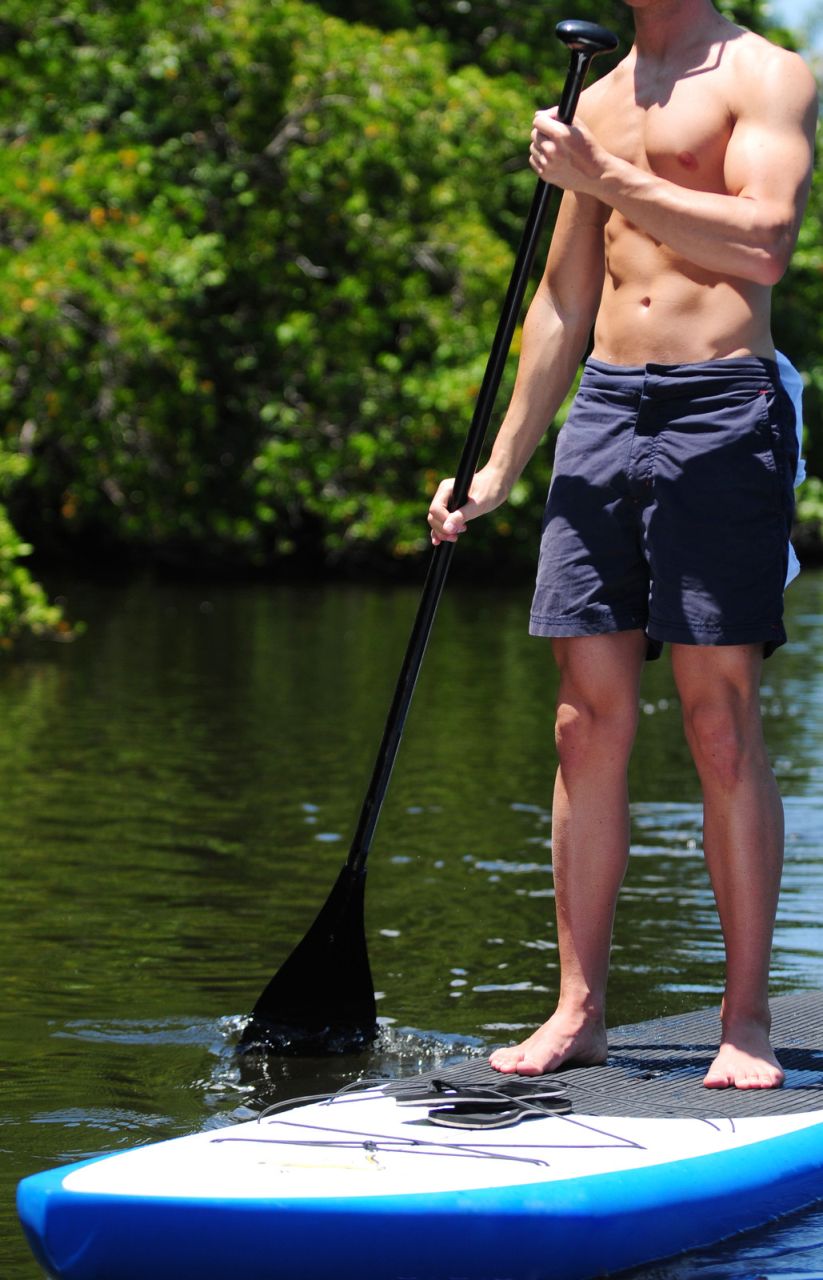You’d agree that paddleboarding is an excellent sport that every beginner can quickly get the hang of. However, like every other activity, there are tips that every beginner can learn to perfect the sports.
Let’s find out what they are.
Standing up on the Paddleboard
Every beginner to paddling would need to learn how to paddle the board. Find out how below:
- First, launch the paddleboard by taking it to the water. Then, you should put the paddle on your board and kneel in the center of the board.
- Next, you should try to rise into a squatting position with one foot at a time. Ensure that your feet are shoulder-width apart.
- Then, slowly raise further while bending your knees slightly; however, ensure that you keep your back straight wheel rising.
- You should face forward with your toes. Doing this helps you in keeping your balance.
Holding the Paddle
Most beginners usually make the mistake of holding their board paddle wrongly. However, as a beginner in stand up paddling, you can follow the procedures below on the proper way of holding the paddle.
- The first step to holding the paddle is to place the paddle at an angle where the blade faces away from you instead of towards you.
- Place one hand on the grip located at the top, then the other at the paddle’s bottom. When you place the paddle above your head, ensure the bend of your elbows forms 90-degree angles. While you change sides, you should rotate your hand position.
Getting Back the Right Way After Falling Down
As a newbie, it’s not a big deal to fall off your paddleboard. However, you should ensure that you don’t get hurt while falling off. So let’s find out how.
- While falling, try not to fall forwards or backward since you might fall towards your stand-up board. Instead, try falling towards your sides while ensuring your paddle is placed forwards, so you do not get hurt when you hit it.
- Additionally, keep your paddle under control while falling so you do not lose it.
- After falling, you can get back up, positioning yourself in the middle of your board. Put your hand in the paddle, then climb into it. After that, you should place the paddle at a right angle to the board, then get up.
Taking Your First Paddleboarding Stroke
After taking your board and heading to the water for the first time, you can follow the steps below to take your first paddle stroke.
The forward stroke
The forward stroke is an essential move used to go straight ahead. To perform this stroke, you have to paddle on both sides of your board while ensuring that your paddle is kept close to your board’s centerline.
The turning stroke
This stroke is used to turn your board in any direction or make adjustments. This is done by paddling on any side of your board via short but powerful strokes. Ensure your paddle is kept close to your board’s rail.
The backward stroke
This stroke is used to turn your board backward or stop. Do this by paddling on any side with slow but long strokes while ensuring your paddle is close to your board’s centerline.
Bonus: Choosing your Paddling Spot As A Beginner
As a beginner to board paddling, it would be safer and easier to learn it in a calm and controlled environment before moving to challenging areas. You should select lakes with still water that have little wind resistance to practice.
Search for areas of the lake that are uncrowded or with fewer people and boats since you might not yet be familiar with avoiding obstacles. Ensure you are comfortable in your chosen area and you feel safe. Preferably, an area with gradual water decline would be appropriate. Such an area would allow you to rely on your board, not the ground or your feet.
If the weather condition changes while practicing, then lower your body to the board, ensuring that your belly is pressed against the deck with your paddle tucked away. Then use your arms to get back to the shore as fast as you can.
As a beginner, you shouldn’t learn stand-up paddling alone. Instead, get a friend or family to accompany you since it would be safe to know that someone is watching after you in case of falls or other accidents. You should continuously practice the various paddling skills till you are confident about moving to higher challenging water.
When you decide to start paddling in the ocean, you should keep your distance in mind while paying attention to your surroundings, like surfers, piers, and docks. Don’t go too far from the shore. Always be conscious of currents and tides, and ensure you don’t paddleboard without putting on personal flotation devices (PFD).
That’s A Wrap
Stand-up paddling does not have to be a complicated sport. If you follow the tips shown above, it might be easier to get started while having fun. You have to keep practicing, and in the long term, paddle boarding might not be as difficult as you think it is.




